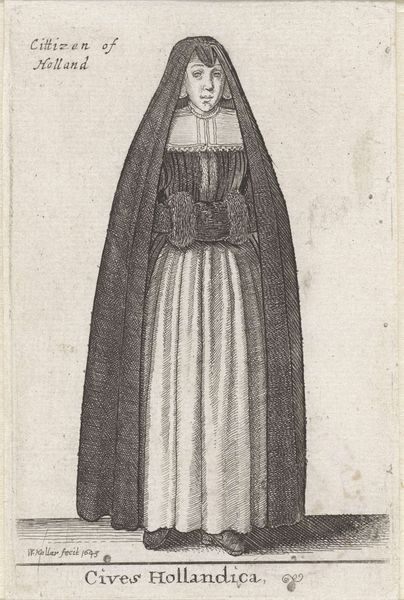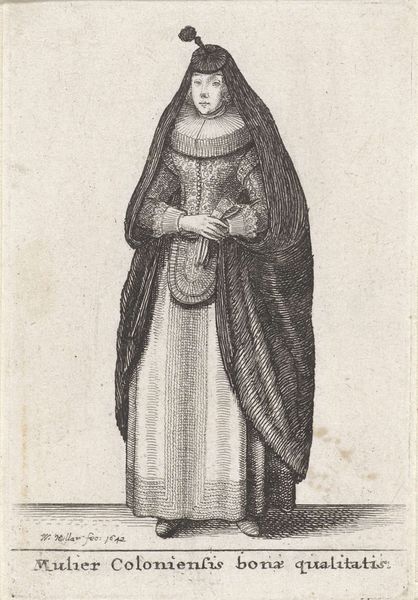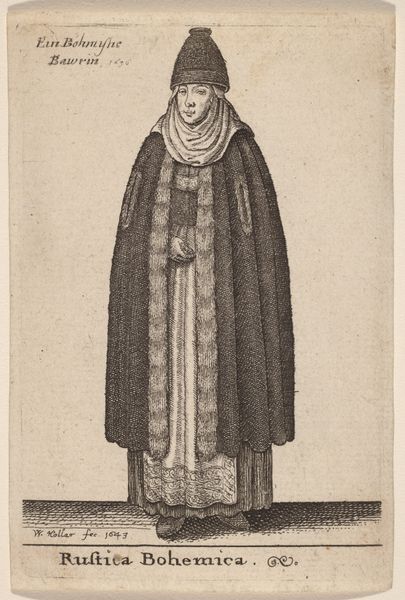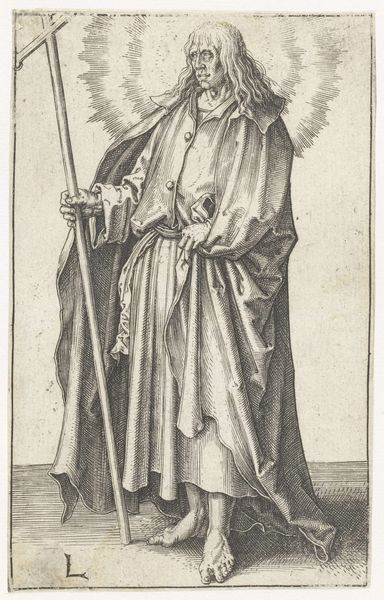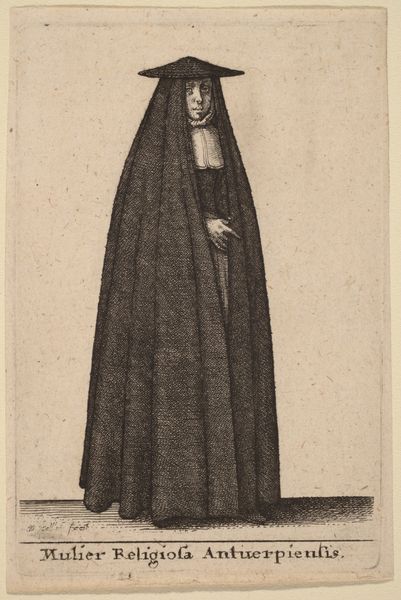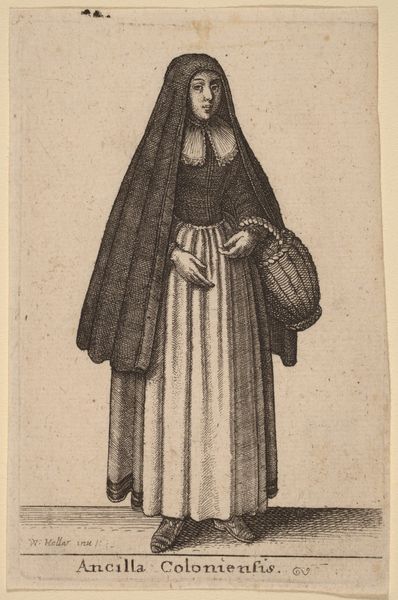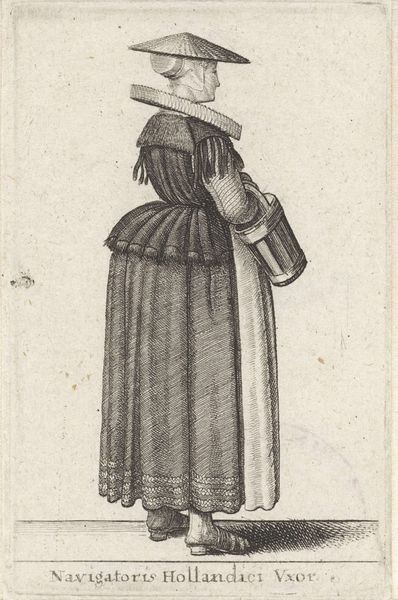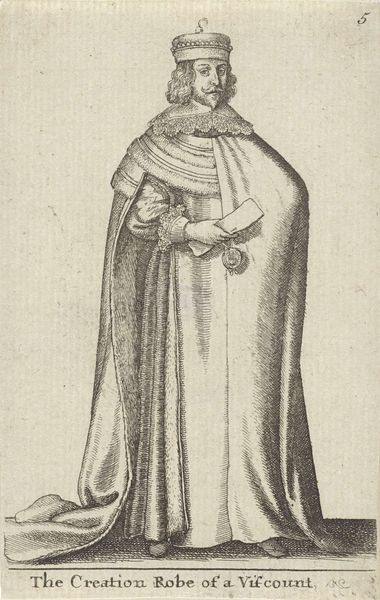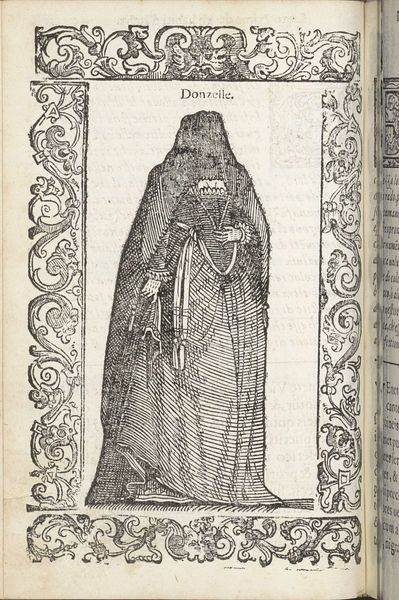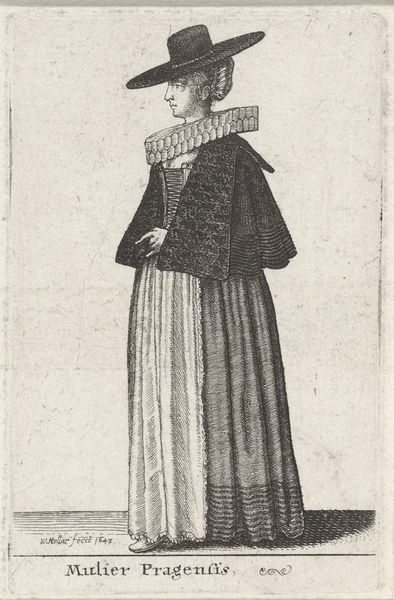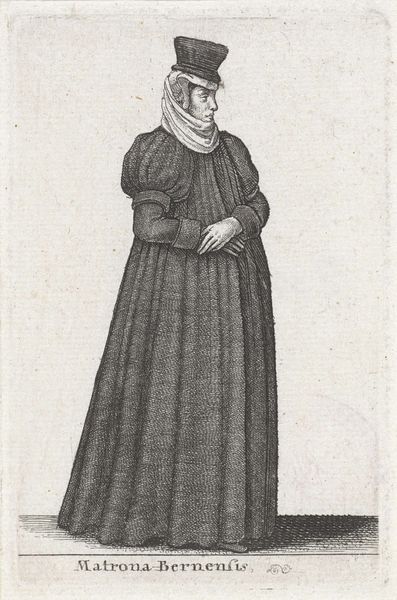
engraving
#
portrait
#
medieval
#
baroque
#
old engraving style
#
figuration
#
line
#
engraving
Dimensions: height 94 mm, width 62 mm
Copyright: Rijks Museum: Open Domain
Wenceslaus Hollar made this print, Mulier Coloniensis, using etching, a printmaking process, in the 17th century. He covered a metal plate with a waxy, acid-resistant coating, then scratched an image into it. After, he submerged the plate in acid, which bit into the exposed lines. Hollar expertly harnesses the potential of the etching technique. The material qualities of the metal plate allowed Hollar to create fine and intricate lines, which he built up to create areas of tone, as we can see in the woman's heavy cloak. The act of etching mirrors the cultural significance of printmaking during the 17th century. It was a means of mass production, allowing images and ideas to be disseminated widely. By paying attention to the materials, processes, and social context, we can understand that this print by Hollar serves not only as an aesthetic object, but also as a record of material culture and artistic innovation.
Comments
No comments
Be the first to comment and join the conversation on the ultimate creative platform.
